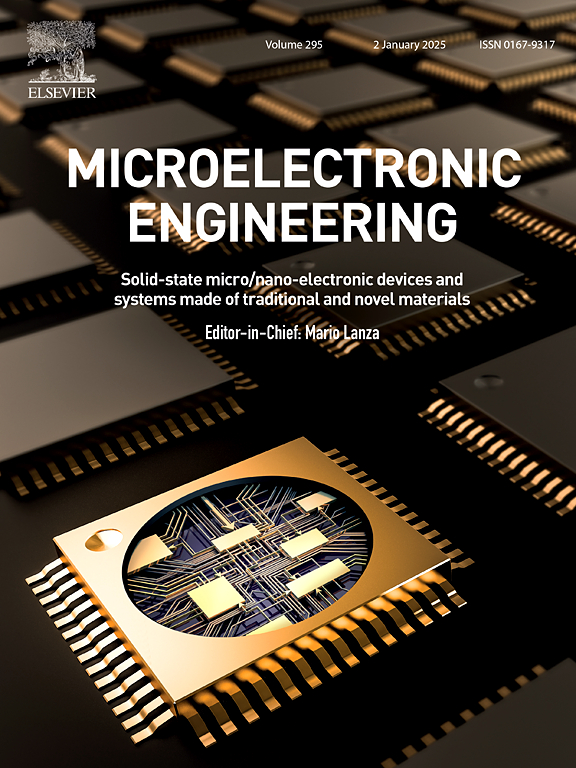Enhancing ferroelectric resistive switching via polar order engineering in Sm-doped BiFeO3 films
IF 3.1
4区 工程技术
Q2 ENGINEERING, ELECTRICAL & ELECTRONIC
引用次数: 0
Abstract
Ferroelectric materials are promising for nonvolatile resistive memories due to their unique switchable diode effect. To improve the resistive switching performance, the fundamental correlation between the diode effect and the polar ordering should be unraveled. Here by the A-site substitution with Sm, we report the resistive switching in ferroelectric SrRuO3/SmxBi1-xFeO3 (x = 0, 0.1, 0.2)/Pt thin-film capacitors. We find that the ground state of BiFeO3 changes from ferroelectric to antiferroelectric with increasing Sm substitution, which is accompanied by the fading of the resistive switching in Sm0.2Bi0.8FeO3, illustrating the decisive role of polarization in resistive switching. Moreover, similar dynamics between polarization and resistance states supports the close link between the ferroelectric domain growth and the resistive switching. Our SrRuO3/Sm0.1Bi0.9FeO3/Pt device achieved a high on/off ratio of 104 and fast switching speed of 6.25 ns, thanks to reduced leakage current from Sm doping while preserving ferroelectric properties. Our results thus provide a new approach to enhance the resistive memory performance of ferroelectric materials.
通过极性序工程增强sm掺杂BiFeO3薄膜的铁电电阻开关
铁电材料由于其独特的可开关二极管效应,在非易失性电阻存储器中具有广阔的应用前景。为了提高电阻开关性能,必须揭示二极管效应与极序之间的基本关系。本文报道了铁电SrRuO3/SmxBi1-xFeO3 (x = 0,0.1, 0.2)/Pt薄膜电容器的阻性开关。我们发现,随着Sm取代量的增加,BiFeO3的基态由铁电变为反铁电,并伴随着Sm0.2Bi0.8FeO3的阻性开关的衰减,说明极化在阻性开关中的决定性作用。此外,极化态和电阻态之间的相似动力学支持了铁电畴生长与电阻开关之间的密切联系。我们的SrRuO3/Sm0.1Bi0.9FeO3/Pt器件实现了104的高开/关比和6.25 ns的快速开关速度,这得益于Sm掺杂减少了泄漏电流,同时保持了铁电性能。因此,我们的研究结果为提高铁电材料的电阻记忆性能提供了一种新的途径。
本文章由计算机程序翻译,如有差异,请以英文原文为准。
求助全文
约1分钟内获得全文
求助全文
来源期刊

Microelectronic Engineering
工程技术-工程:电子与电气
CiteScore
5.30
自引率
4.30%
发文量
131
审稿时长
29 days
期刊介绍:
Microelectronic Engineering is the premier nanoprocessing, and nanotechnology journal focusing on fabrication of electronic, photonic, bioelectronic, electromechanic and fluidic devices and systems, and their applications in the broad areas of electronics, photonics, energy, life sciences, and environment. It covers also the expanding interdisciplinary field of "more than Moore" and "beyond Moore" integrated nanoelectronics / photonics and micro-/nano-/bio-systems. Through its unique mixture of peer-reviewed articles, reviews, accelerated publications, short and Technical notes, and the latest research news on key developments, Microelectronic Engineering provides comprehensive coverage of this exciting, interdisciplinary and dynamic new field for researchers in academia and professionals in industry.
 求助内容:
求助内容: 应助结果提醒方式:
应助结果提醒方式:


